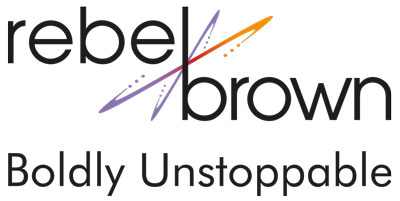Innovative thinking is critical to our business success. Yet we’ve all been highly trained in deductive thinking. This thinking style makes us limit our choices and our creativity. Not the recipe for success in any year.
So for 2015, what if we shift out of deductive reasoning and into a better way of evaluating our business opportunities? A way of thinking that expands our horizons instead of limiting them. A way that brings innovation and creativity to the forefront of our minds
We can all do just that! Starting now.
Inductive Thinking is Innovative Thinking
So what’s deductive thinking? That’s the style of thinking that begins with an initial assumption. Then we draw a box around that assumption and force fit our information into the box. If information disagrees with our assumption, we discard it as irrelevant.
As you can imagine, that’s pretty limited in the innovative thinking category, especially in a world filled with options. But it’s the way we’ve always done it, and it fits with our intrinsic mind expectation that says we are always right about our assumptions.
Inductive reasoning starts with a small idea or assumption. It then follows that idea to the next logical idea, to the next and next. This process opens up our minds to new potentials and choices and to innovation. This style of thinking gives us a much broader perspective on the potential options and opportunities – including things we may never have thought of before. Things that would be discarded by deductive thinking. Powerful innovation results.
It’s pretty obvious to me that shifting into inductive thinking can and will increase innovation in our business and our lives. So how do we shift?
3 Steps to Becoming an Inductive Thinker
There are three shifts that will help us become inductive thinkers. Here’s how to start:
Ditch the box.
Instead of spending time and energy creating that big bad assumption or postulate and then surrounding it by a box of trues and falses, start with a single idea. Then let other ideas free flow around it. Think brainstorming, where there are no bad ideas.
For example, let’s say you’re looking for a new product idea. Instead of coming up with the whole product then boxing it into a package and testing it on your buyers, try this. Listen to your buyers then pick one statement or idea that is common across all.
For example, let’s say they want a simpler version of your current product. Don’t go build that simpler version based on your assumptions about simple. Follow the idea of simple…. ask buyers what they think of as simple and collect those single ideas. Then ask them to rank their ideas for simple based on what they’d like to have. Ask questions, including a lot of what if’s.
Expand on the question or idea.
We’ve all been programmed to jump to conclusions, to solve that puzzle and come up with a solution as fast as we can. Think about how many times you’re listening to someone and already working on your response or solution? That response is usually about being in or out of the box we create for our assumed answer.
Instead, practice stopping yourself when you begin to look for that conclusion. Just stop, as would if you were changing a habit. Then, listen listen listen. Take in all the information and then ask yourself questions that expand on the original question. “What if this is true? Then that would also be true.” “What if I took this new approach, what else could I do that would be unique?” Instead of racing for the answer, expand on the question and follow the idea flow.
Ask some different kind of questions.
Traditional questions focus on questioning our theory. “What if this happens?” Try adding questions that create new perspectives and out of the box thinking.
For example, let’s say you have an assumption that says, “My buyers want a product that is simpler.” Ask things like, “What would happen if my buyers didn’t want something simpler?” “What would happen if a different market (not my current market) wanted a simpler product?” “What if there isn’t a market for a complex product?” What if there isn’t a market for a simpler product? go all the way around the assumption with questions – instead of assuming the assumption is moving forward. This questioning approach empowers you to step into a variety of different perspectives…. and innovation will follow.
The Bottom Line
We’re trained to be deductive thinkers, limiting our focus, jumping to conclusions and then finding the evidence to prove ourselves right. This approach serves to limit our thinking and our innovation.
By stepping into inductive reasoning, we can and will fuel our innovation and creativity. It isn’t difficult to make this change.With a bit of focus and commitment, you can be thinking inductively in no time. The results, well. you’ll find them to be simply out-of-the-box.
Try it for a few weeks and then I’d love to hear about your experiences!







6 Comments
Michelle Spear
July 10, 2013 - 4:48 amIn a world where the importance of systems and routines is stressed, it’s easy to see how staying within the “box” makes sense. What we tend to forget is that these systems allow us the freedom to be more creative and innovative.
Thanks for the reminder.
rebel brown
July 10, 2013 - 8:23 amHI Michelle
We’re all so programmed by society to do things the way they’ve always been done. Yet our minds have so much more potential! All it takes is simple shifts to change our perspective and open ourselves to more choices and opportunities! And we can do just that – with one step at a time.
THANKS so much for stopping by and sharing!
Dan Forbes
July 11, 2013 - 3:18 pmI really like the idea of asking more and more questions. Better questions. When we assume, we restrict what might be better ideas.
Thanks.
rebel brown
July 14, 2013 - 8:42 amIsnt it interesting how we can make a simple shift in the way we think and end up with breakout results Dan? All it takes is a bit of behavioral and mental flexibility – and we can step out of our knowns and into a world of limitless possibilities!
Thx as always for stopping by and sharing!
www.hacktheworld.eu
January 30, 2015 - 5:15 amI do not know whether it’s just me or if perhaps everyone else experiencing problems with your website.
It seems like some of the tesxt on your posts are running off the screen. Can somebody else please comment and let me know
if this is happening to them too? This may bee a problem wigh my browser because
I’ve had this happen before. Thank you
rebel brown
February 2, 2015 - 10:57 amHI there
Not sure whats up with your version of the site. I see the pages in format with both Chrome and Firefox. Maybe clear your cache?